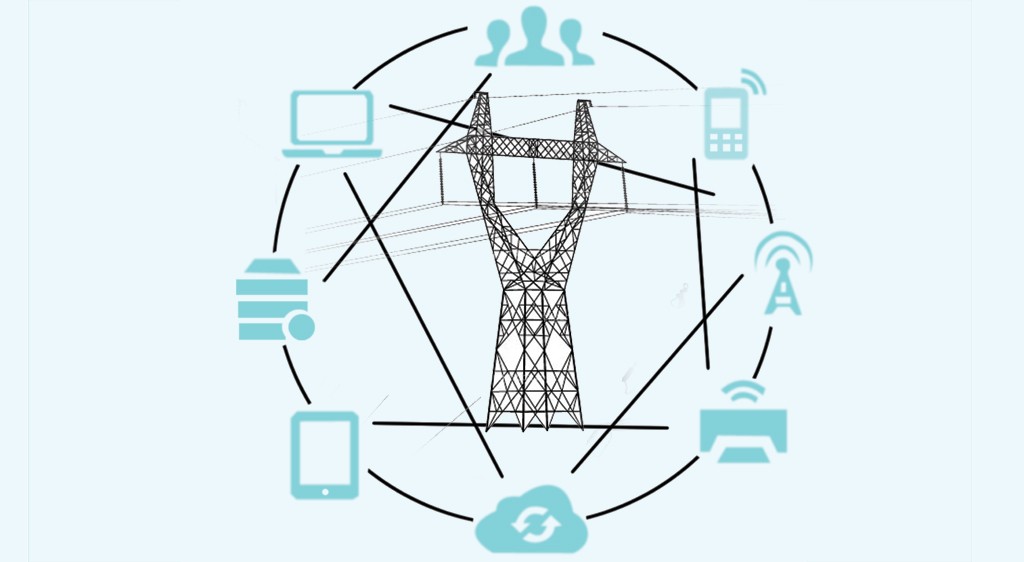Driving T&D sector the ‘IoT’ way
By EPR Magazine Editorial June 7, 2018 3:13 pm IST
By EPR Magazine Editorial June 7, 2018 3:13 pm IST

Together with smart grids, digital substations could bring in smarter power systems that have the latent to digitally transform the Indian power sector.
Industry 4.0 is changing the industries considerably, giving them a leap in reliability and efficiency. It comes as no surprise since the past three industrial waves have done the same. Moving into an era of OT/IT, advanced robotics, Big Data, autonomous machine learning, IOT, and AI among others, it’s important to have a strong principal information gathering system.
It is stimulating to see that the government of India is committed to the cause of providing 24×7 affordable and environment friendly ‘Power for All’ by 2019. Its schemes entail specific actions to improve electricity access to all households and steps for strengthening the sub-transmission and distribution infrastructure, including metering, at all levels. Ideas such as prepaid and smart meters are inventive and have the latent to boost the quality of living and kick-start overall economic activities.
Along with the consumer, the government is also revitalising the distribution companies. Its move to take up discoms debts is a step in the right direction. In order to attend to the demand-side issues, it foresees digital intrusion like upgrading to smart meters, consumer indexing and GIS mapping and reducing AT&C losses.
Powering the effort on the transmission level is a host of cutting-edge technologies that have made possible the uninterrupted supply of power over large distances. For instance, the high voltage direct current transmission systems offer an excellent opportunity to support and improve the power supply from sustainable, efficient and consistent future grids. They not only offer economic bulk power transmission and interconnection of allochronic AC grids, but also permit renewable energy generators like windfarms to access the grid.
Internet of Things (IoT) is termed as the next industrial revolution, Industry 4.0. The concept of IoT can be summarise as the capability to sense the environment with multitude of sensors, process all the data, make intelligent decisions and act in real time. At a high level, there are three use-cases of IoT in the power sector: a) operational optimisation resulting in improved economics and reduced carbon emissions, b) asset performance management (APM) for higher reliability and lower cost of maintenance, and c) customer engagement with the objective of lowering cost, and supporting local production, storage and usage of electricity.
Internet of Things, together with Big Data and Analytics can help reduce India’s power losses, thus providing electricity to millions of households that go without power every day. Smart grids with automation, integrated controls and new technologies such as connected sensors can help in faster restoration of electricity after outages, efficient power transmission, reduced management expenses and integration of energy systems that are based on green and renewable sources of energy like wind and solar energy. This would help in managing energy while reducing dependency on non-renewable sources.
Together with smart grids, digital substations could bring in smarter power systems that have the latent to digitally transform the Indian power sector. Power generation is distributed over many locations; efficiently replacing the traditional model of one-way power supply by multidirectional flow leading to more intelligent power management. A digital substation would have communication and control systems, high-tech monitoring, together with transmission, distribution, consumption, and storage, leading to a more automated system.
A digital substation characteristically includes digital communication through fiber optic cables, replacing the traditional copper connections. It would also facilitate enhanced availability, greater flexibility, and improved safety in the sector. Moreover, it would cut risks, costs, and would also lessen the deleterious impacts on environment. Intelligent electronic devices (IEDs) and integrated communication technology form the foundations of a digital substation. The IED is essentially a microprocessor-dependent control and protection tool used for power equipment, including circuit breakers, transformers and capacitor banks. The overall hike in data input would help in monitoring, protection and optimisation of assets.
Sunil Wadhwa, Managing Director, GE T&D India Limited says, “Indian Grid is swiftly moving towards digitisation of its assets. Remote monitoring and diagnostics, asset management, outage management systems, demand response, digital substations are some of the features being implemented in the grid today. Power Grid’s National Transmission Asset Management Center (NTAMC) being developed by GE is a robust example of monitoring and maintenance of critical grid infrastructure utilising latest digital offerings.”
In order to strategically update, the Central / State utilities need to replace aging present infrastructure with advanced technologies.IoT will surely empower us to capture information of any parameter of transmission systems / lines running hundreds of kilometres across different and tough terrains.
Milind Thekedar, Managing Director, JBS Enterprises Pvt Ltd
Consumers today demand transparency and regular monitoring of their consumption pattern through connected devices and this is where IoT based solutions will play a critical role.
Sunil Wadhwa, Managing Director, GE T&D India Limited
We use cookies to personalize your experience. By continuing to visit this website you agree to our Terms & Conditions, Privacy Policy and Cookie Policy.